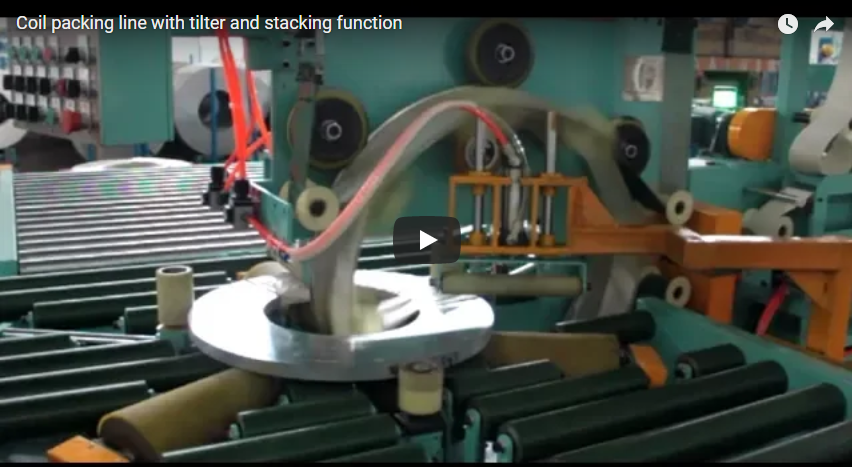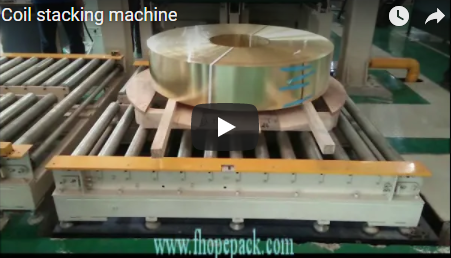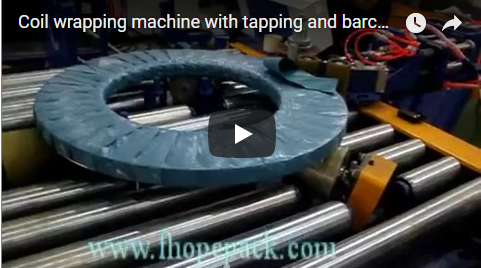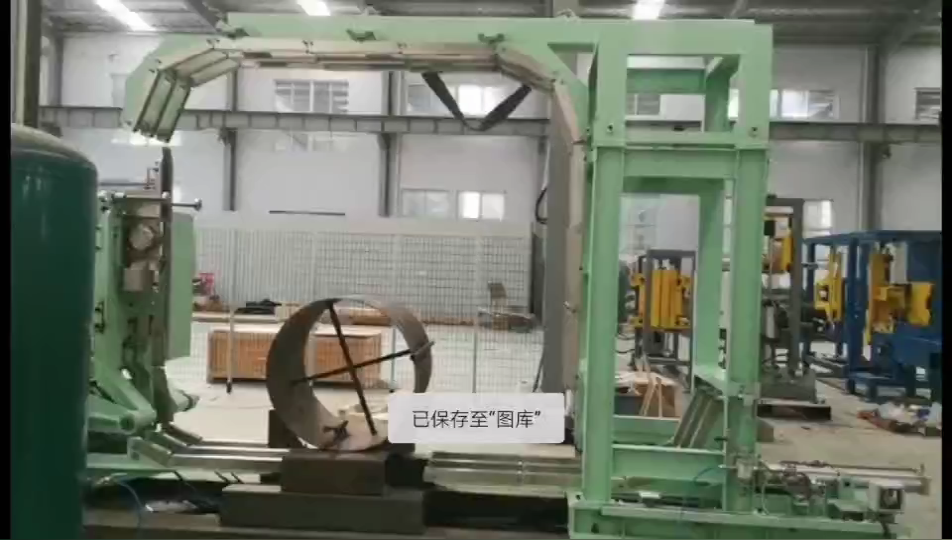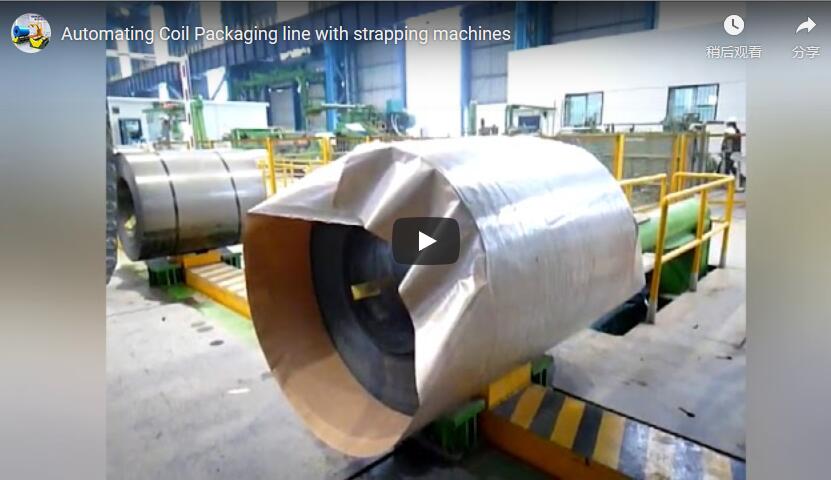Revolutionizing Metal Processing: A Deep Dive into the Automated Stainless Steel Slit Coil Packing Machine
Handling and packaging slit stainless steel coils presents unique challenges in the metal processing industry. Ensuring product integrity, maximizing operational efficiency, and maintaining worker safety are paramount. Manual or semi-automated processes often fall short, leading to inconsistencies, potential damage, and higher labor costs. This is where advanced automation steps in. The automated slitting stainless steel coil packing machine offers a comprehensive solution designed to streamline your workflow and protect your valuable products.
Let's explore the technical intricacies, design considerations, and operational benefits of this essential piece of equipment.
1. The Core Challenge: Protecting Slit Coils
Slit coils, especially those made from stainless steel, are susceptible to damage during handling and transport. Scratches, edge damage, and corrosion can significantly reduce the value of the material. Traditional packing methods can be labor-intensive, slow, and may not provide adequate or consistent protection, particularly in high-volume operations.
2. The Automated Solution: System Overview
An automated slit coil packing machine integrates multiple functions into a seamless process. Typically positioned downstream from a slitting line, the system automatically receives slit coils, prepares them, applies protective packaging materials and strapping, and prepares them for storage or shipment. The goal is end-to-end automation, minimizing manual intervention.
3. Key Components and Functionality Breakdown
Understanding the core components reveals the machine's sophistication:
- Coil Receiving & Transport: Coils are typically transferred from the slitting line via conveyor systems, turnstiles, or walking beams, ensuring smooth and damage-free movement into the packing line.
- Down-Ender / Tilter: A critical component, often featured in these systems (as seen in the video). It safely rotates the coil, commonly from an "eye-to-sky" (vertical bore) to an "eye-to-horizon" (horizontal bore) orientation, which is usually required for effective wrapping and strapping. This mechanism is engineered for stability and precise movement, handling significant weight.
- Circumferential Strapping Unit: Applies PET or steel straps around the coil's circumference. Key parameters include:
- Strap Type: PET (common for lighter/medium coils, safer) or Steel (for heavier coils).
- Number of Straps: Programmable based on coil width and stability requirements.
- Tension Control: Ensures straps are tight enough to secure the coil without causing damage.
- Sealing Method: Heat sealing (PET) or mechanical crimping (Steel).
- Protective Wrapping Unit: Encases the coil in protective material.
- Material Options: Stretch film (most common), VCI (Volatile Corrosion Inhibitor) paper/film for enhanced corrosion protection, HDPE fabric.
- Wrapping Method: Typically involves rotating the coil while a shuttle dispenses the wrapping material, ensuring complete coverage with programmable overlap.
- Radial Strapping Unit (Optional): Applies straps through the eye of the coil, further securing the package, especially for stacked coils or bundles.
- Control System (PLC & HMI): The brain of the operation. Utilizes a Programmable Logic Controller (PLC) (e.g., Siemens, Allen-Bradley) for process automation and a Human-Machine Interface (HMI) touch screen for operator control, recipe management, and diagnostics.
4. Technical Data & Specifications Snapshot
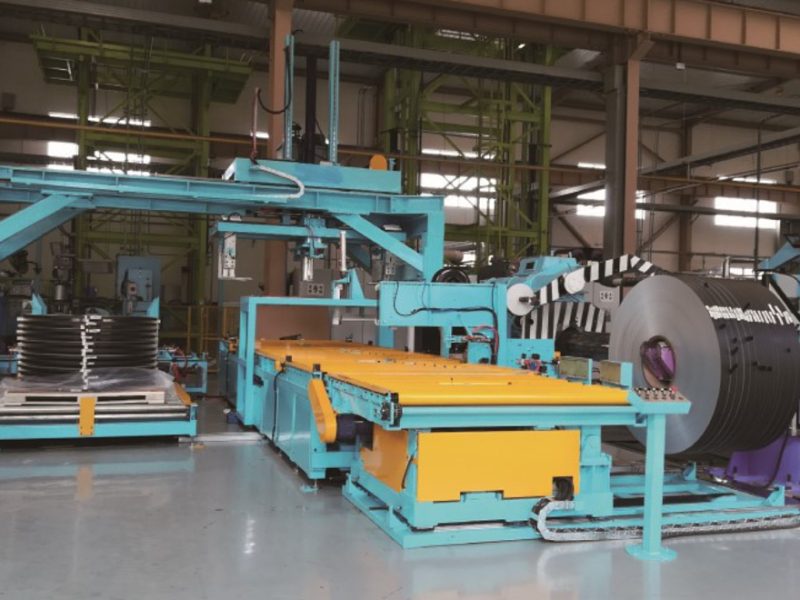
While specific parameters vary based on customization, typical specifications include:
- Coil Outer Diameter (OD): 800mm - 1800mm
- Coil Inner Diameter (ID): 508mm / 610mm (or custom)
- Coil Width: 20mm - 600mm
- Maximum Coil Weight: 1 Ton - 8 Tons
- Packing Cycle Time: 60 - 180 seconds per coil (highly dependent on size and packing steps)
- Strapping Material: PET (16mm, 19mm, 25mm) / Steel (19mm, 32mm)
- Wrapping Material: LLDPE Stretch Film, VCI Film/Paper, Woven HDPE
- Control System: PLC (Siemens, Allen-Bradley, Mitsubishi options) + HMI Touch Screen
- Power Requirement: 380V/50Hz/3Ph (or region-specific)
- Compressed Air: 0.5 - 0.7 MPa
5. Robust Design and Structure
These machines are built for demanding industrial environments:
- Frame Construction: Heavy-duty welded steel frame provides rigidity and durability.
- Component Quality: Utilizes high-quality bearings, motors, sensors, and pneumatic/hydraulic components for reliability and longevity.
- Safety Features: Incorporates safety fencing, light curtains, emergency stops, and access interlocks compliant with international safety standards (e.g., CE, ISO).
- Modular Design: Often designed in modules (tilter, strapping, wrapping) allowing for flexibility in layout and potential future upgrades or modifications.
6. The User Experience: Tangible Benefits
From an operational standpoint, implementing an automated system yields significant advantages:
- Greatly Increased Throughput: Consistent cycle times outperform manual methods, reducing bottlenecks.
- Enhanced Worker Safety: Eliminates strenuous and hazardous manual lifting, strapping, and wrapping tasks.
- Superior Product Protection: Uniform application of straps and wrapping materials minimizes transit damage and prevents corrosion (especially with VCI).
- Reduced Labor Costs: Reallocates manpower from repetitive packing tasks to more value-added activities.
- Material Savings: Optimized use of strapping and wrapping film reduces waste.
- Process Consistency: Ensures every coil is packed to the same standard, improving quality control.
7. ODM Services: Tailoring to Your Needs
The mention of "ODM service" (Original Design Manufacturing) signifies the capability to provide highly customized solutions. This means the manufacturer can:
- Design the machine based on specific client requirements (coil dimensions, weight, required packing materials, speed).
- Integrate the packing line seamlessly with existing upstream (slitting line) and downstream (storage/logistics) systems.
- Adapt the machine layout to fit available factory floor space.
- Customize the control system and HMI for specific operational preferences or data integration needs.
Conclusion: Investing in Efficiency and Quality
The automated slitting stainless steel coil packing machine, particularly one incorporating features like a down-ender and offering ODM customization, represents a strategic investment for modern metal processors. It directly addresses key challenges related to efficiency, safety, cost-effectiveness, and product quality. By automating the packing process, businesses can ensure their valuable slit stainless steel coils are handled and protected optimally, ready for delivery to customers with their integrity intact. Understanding the technical capabilities and design features allows for informed decisions when selecting a system that aligns perfectly with operational demands.
For further information on VCI technology benefits, you can explore resources like this overview on how VCI paper works (Note: Example external link to a credible source).

